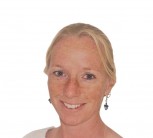The Whale Unit at the University of Pretoria’s Mammal Research Institute (MRI) will be conducting this year’s aerial survey of southern right whales from 28 September to mid-October. This is the 41st annual southern right whale photo-identification aerial survey, making it one of the longest-running datasets on any marine mammal worldwide.
While all encountered whale species will be recorded during the survey, special focus will be given to encounters of southern right whales. “Unfortunately, this year the numbers of southern right whales along our shores appear to be very low again,” Dr Els Vermeulen, research manager at the Whale Unit points out.
“A preliminary count survey conducted at the end of August indicated the presence of 71 females with calves and 11 unaccompanied adults, leading to a total of 153 southern right whales between Hermanus and Witsand. This is about half of what was seen last year around the same time, and likely to become the second lowest count in over 30 years. Current information from other breeding grounds, including Australia and Brazil, also indicate a dramatic decreased presence of southern right whales this year.”
The survey is flown annually between Nature’s Valley and Muizenberg, in Cape Town, at an altitude of about 300m and within 1km of shore using an Airbus H120B helicopter. Flying is usually carried out only under adequate survey/weather conditions, between 08h00 and 16h00 as light and glare outside of these times compromises survey photography.
Southern right whale females with calves, as well as all individuals with distinctive brindle colouration or markings, will be photographed in order to allow individual identification. “Vertical images of both the heads and the backs of the animals will be taken, which will allow recognition of the pattern formed by the wart-like callosities on their heads, and in some cases, of the white and grey pigmentation patterns on their backs,” Dr Vermeulen explains.
These particular whales received their name from whalers who believed them to be the “right whale” to hunt, as they are predictable in distribution, generally slow swimming and, most importantly, float when killed. Indeed, the species was heavily whaled in the past (particularly by the Moby Dick-style foreign open-boat whaling fleets between about 1780 and 1835), which reduced the global population from between 70 000 and 80 000 individuals to a mere 60 reproductive females at the termination of right whaling in 1935.
However, since their international protection in 1935, the three breeding populations (in the coastal waters of Australia, Argentina and South Africa) have been increasing at about 6.5% a year. “Currently, the regional (southern African) abundance is estimated at just over 6 000 individuals, with a global population size of just under 15 000 individuals,” says Dr Vermeulen. “Thus, one of the main objectives of the annual aerial survey is to monitor this recovery and the new challenges these whales face.”
Photography of each group usually takes less than five minutes, during which time the helicopter decreases in altitude to hover some 150-200m above the whales. Once sufficient photographs have been obtained, the helicopter will return to the 300m altitude to continue searching for whales, although in areas of high whale densities the aircraft may move directly from group to group at the lower altitude.
“After the survey, the best images of each individual will be selected from each encounter and compared to all other selected images from the 2020 survey as well as to the Whale Unit’s catalogue of identification photographs of more than 2 300 recognisable adults from the previous 40 annual surveys,” explains Dr Vermeulen.
“These analyses allow for sighting histories of known individuals to be compiled and a subsequent investigation of individual movement and distribution patterns as well as the reproductive/calving histories of females. This data will be used to further investigate the vital parameters of the population, including abundance estimation, population growth rate, survival, calving intervals and the age at which a female has her first calf.” This allows the researchers to accurately model the population demographic parameters over the long term.
Sightings of southern right whales in their breeding grounds haven’t been normal in the past decade. Within South Africa, sightings of females with calves decreased dramatically in 2015, 2016 and 2017, increased above normal levels in 2018 and dropped again substantially in 2019. Sightings of unaccompanied adults (males and non-calving females) have decreased drastically in 2010 and have not yet returned to normal levels. This suggests that only pregnant females that are about to give birth complete their migration to the South African coast to increase their calf’s survival chances, whereas the others aren’t undertaking their migration to the full extent.
Additionally, data continues to show decreased calving success, with females giving birth to a calf every four to five years instead of every three years. Successful calving in southern right whales relies on having an adequate body condition (blubber thickness or “fatness”), which is directly influenced by their feeding “success”. “Because of this, our working hypothesis is that a decreased availability of food in the southern right whale feeding grounds in the Southern Ocean lies at the heart of these changes,” Dr Vermeulen says. “Indeed, new results of our work show that the South African southern right whale population has drastically changed its feeding locations in the past two decades, suggesting that their previously productive feeding grounds have changed over time. Considering the vast oceanic range of the southern right whale feeding grounds, our recent findings point toward large-scale ecosystem changes in the Southern Ocean.”
The observed limited migratory behaviour and decreased calving success of southern right whales in South Africa further indicate that while these changes in feeding behaviour might be an attempt to keep up with a changing ocean, they might not be sufficient for the whales to obtain an adequate body condition, which will ensure their calving success. “We are further investigating the whales’ nutritional condition using overhead drone images and analysis of blubber stress hormone levels,” adds Dr Vermeulen. “These results should be available at the end of this year.”
The MRI Whale Unit’s 2020 survey will be flown in association with Silvercross Aviation and run with the support of the De Hoop Collection, Denel Overberg Test Range and private citizens along the route. The survey is carried out under a permit from the Department of Environment, Forestry and Fisheries to approach whales and under specific Marine Protected Area permits from the relevant conservation authorities.
Follow the Whale Unit’s southern right whale research by symbolically adopting a whale. In so doing, you will be supporting whale research and conservation in South Africa. All funds go towards the unit’s fieldwork costs. To find out more about their whale adoption programme, go to www.adoptawhale.co.za.
For more information about the Whale Unit, visit their Facebook page.
For further enquiries, contact Dr Els Vermeulen on 060 9714301 or Chris Wilkinson (technical manager) on 083 580 8247.
Dr Els Vermeulen
September 28, 2020

Dr Els Vermeulen has been a researcher at the University of Pretoria (UP) since her postdoctoral appointment in 2015. A Belgian national, she did her undergraduate studies at the University of Antwerp.
In 2017, she took the reins as research manager of the Whale Unit at UP. The unit is part of the University’s renowned Mammal Research Institute (MRI) and is an internationally established whale and dolphin research hub. “Considering the unit’s extensive knowledge base, I feel fortunate to be able to lead its work forward,” Dr Vermeulen says.
The Whale Unit was established in 1985 and has become a globally recognised leader in cetacean (whales, dolphins and porpoises) sciences. Researchers there investigate the ecology, population dynamics and behaviour of cetaceans from southern African waters into the Southern Ocean, with the principal objective of providing knowledge that will promote their conservation.
“The Whale Unit has a database on whales and dolphins that spans over 50 years,” Dr Vermeulen says. “These long-term databases on large mammal species are unique in the world, and provide a critical tool to study long processes such as climate change and its effect on wildlife. Making use of these databases ensures that they continue to grow, and allows me to assist in gaining a better understanding of anthropogenic impacts on the marine environment.”
Over the past 36 years, the unit has built a wealth of expertise, considerable long-term intellectual property and well-established knowledge bases, making it the most established cetacean research group in Africa. Being able to continue with this legacy gives researchers at the unit the opportunity to make a significant contribution to whale and dolphin conservation and management in a broad geographical region.
In terms of cross-faculty research, Dr Vermeulen collaborates with a UP genetics laboratory headed by Prof Paulette Bloomer, as well as the Department of Geography, Geoinformatics and Meteorology.
She regards the Whale Unit’s most recent research – which has shown the effects of climate change on the health, reproductive success and migration patterns of South Africa’s southern right whales – as a research milestone. Much of this research has been highlighted on the Research Matters website.
Dr Vermeulen has always been inspired by established academics in marine mammal research, as it is a highly competitive field and a difficult one to pursue
She looks up to Prof André Ganswindt, her line manager and Head of the MRI. “I admire the way he manages the MRI, creates a family feeling within the group, finds balance between work and personal life, and the way he provides guidance to students and other academics like myself. He is an effective and extremely qualified professional, yet a gentle, patient, down-to-earth person with whom it is a pleasure to work and collaborate with.”
Dr Vermeulen hopes to secure a permanent appointment within the Whale Unit and be able to grow the unit to the next level.
Her advice to school learners or undergraduates who are interested in her field is to follow their dreams. “Live the life you have imagined – in the end, it is not what you want, but how much you want it. Also remember, it is not always what you know, but who you know. So never cease to be a friendly, gentle person. It will stand you in good stead.”
Outside of work, she says she loves spending time outdoors with her two little children and her dogs. “Nothing brings more joy to my heart than seeing them play in nature.”
 Story
Story
University of Pretoria (UP) researchers have found that the antioxidant content of certain types of tea can be likened to that found in recommended portions of fruit and vegetables.
 Infographic
Infographic
Half a cup of black tea, oolong tea or green tea contained the same amount of antioxidants with radical scavenging capabilities (RSC) as that of a 200mg vitamin C tablet.
 Story
Story
The latest issue of the University of Pretoria’s award-winning RE.SEARCH magazine is available now and reflects a shift towards both a fresher design and outlook. This edition is curated under the theme ‘Digital’, and offers a glimpse into some of the fascinating research we’re doing at UP to drive digital leadership and innovation.
Copyright © University of Pretoria 2025. All rights reserved.
Get Social With Us
Download the UP Mobile App